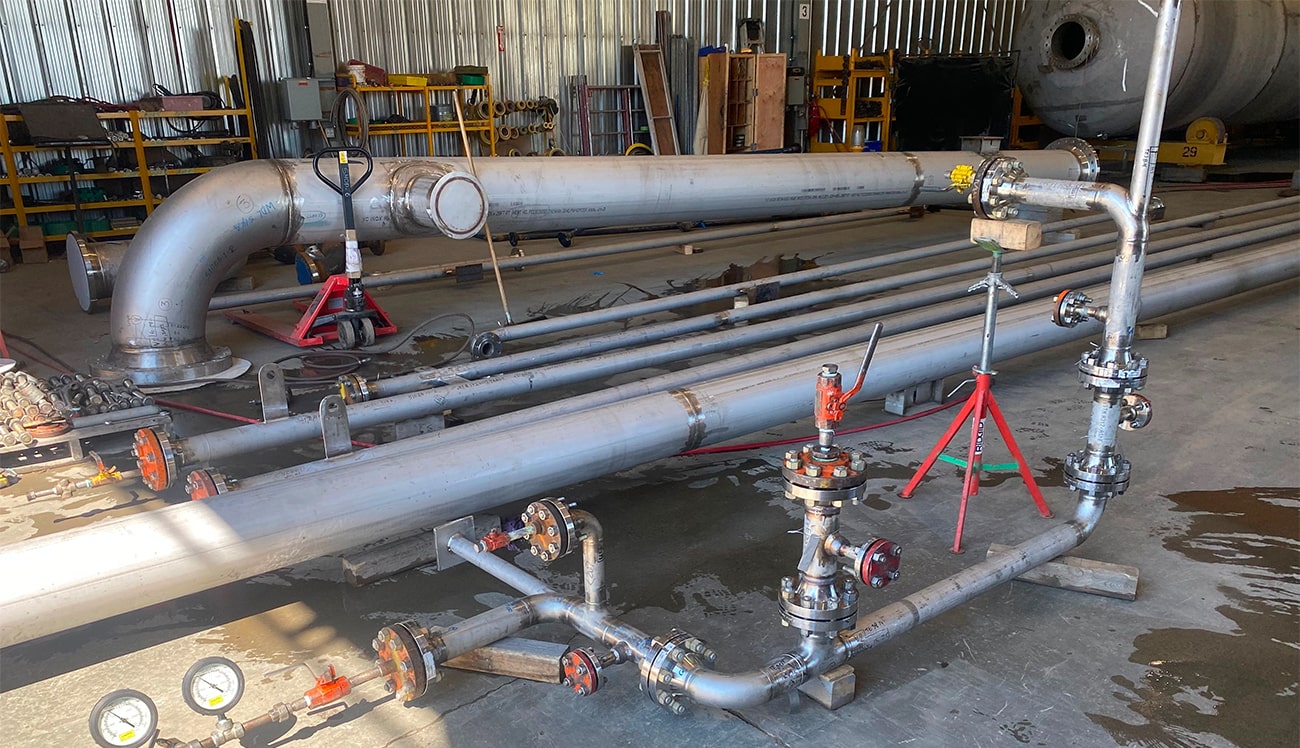Vital Pipe Welding Assessment Tips for Top Quality Assurance
In the world of pipe building, the integrity of welds holds critical value to guarantee the security and effectiveness of the whole system. From natural gas to refined petroleum products, pipelines develop the lifeline of numerous markets. However just how can one assure the quality of these welds that connect the pipe sections? The answer hinges on careful inspection methods and adherence to stringent quality control requirements. By comprehending the important pipe welding examination ideas, experts can avert potential hazards, minimize costly repair services, and promote the reliability of these important frameworks.

Relevance of Welding Evaluation
Welding assessment plays a critical duty in ensuring the structural integrity and security of pipe systems. By diligently taking a look at welds, examiners can recognize any defects or blemishes that could compromise the stability of the pipeline. These assessments are vital for avoiding leaks, tears, and other potentially devastating failures that could result in ecological damage, financial losses, and even death.
The relevance of welding examination can not be overemphasized, as the top quality of welds directly affects the overall performance and long life of the pipe. With non-destructive testing approaches such as visual inspection, ultrasonic testing, radiography, and magnetic particle screening, assessors can discover flaws that may not be visible to the nude eye. By determining and addressing these concerns at an early stage, welding evaluation aids to guarantee that pipelines meet market standards and regulatory requirements.
Ultimately, welding inspection is an essential aspect of quality control in pipe maintenance, repair work, and building and construction (Pipeline Welding Inspection). By supporting strenuous inspection requirements, sector professionals can reduce risks and promote the safety and dependability of pipe systems
Usual Welding Problems
Amongst the obstacles encountered in pipeline welding, usual defects can substantially influence the structural stability and performance of the bonded joints. Splits in the weld can circulate over time, compromising the architectural stability of the pipeline. Spotting and attending to these typical flaws through extensive inspection and top quality control procedures are important for making sure the reliability and security of pipeline welds.
Inspection Strategies for Pipelines

Non-destructive testing (NDT) techniques such as radiographic testing, ultrasonic screening, magnetic particle screening, and liquid penetrant testing are typically used in pipeline welding examination. Visual assessment is also essential in pipe welding to determine any noticeable flaws or suspensions. Furthermore, computerized assessment strategies using sophisticated innovations like drones and robotics are significantly being used to enhance the effectiveness and accuracy of pipe examinations.
Guaranteeing Quality Control Criteria
To support stringent high quality guarantee criteria in pipe building, thorough adherence to established market procedures and standards is necessary. Quality control in welding procedures requires a thorough technique encompassing numerous stages of pipeline building and construction. Ensuring the quality of welds entails using certified welders, correct welding procedures, and adherence to our website industry criteria such as those set by the American Petroleum Institute (API) and the American Culture of Mechanical Engineers (ASME) Assessment and testing play a crucial duty in verifying the stability of welds, with methods like non-destructive testing (NDT) being essential for identifying possible issues. Furthermore, maintaining thorough paperwork throughout the welding procedure is important for traceability and top quality control purposes. Applying a robust high quality administration system that consists of routine audits and testimonials can additionally improve the overall quality control standards in pipe welding. By focusing on adherence to these criteria, stakeholders can ensure the reliability and security of pipeline systems for the long-term.
Avoiding Pricey Repair Work
Given the crucial relevance of preserving rigorous quality control standards in pipeline construction, an aggressive technique to avoid costly repair work is crucial. By applying detailed evaluation procedures throughout the welding process, possible issues can be determined and corrected early on, inevitably conserving both money and time. One essential facet of preventing costly repair work is making certain that welders are effectively trained and certified, as this dramatically decreases the likelihood of faulty welds that might result in future failures. In addition, utilizing sophisticated assessment methods such as non-destructive screening can aid discover any problems or inconsistencies in the welds prior to they intensify right into significant issues. Routine upkeep checks and monitoring of ecological variables that could influence the stability of the pipe are additionally vital in avoiding expensive repairs. By investing in preventative actions and prioritizing quality control at every stage of the pipe welding process, companies can decrease the threat of pricey repairs and ensure the long-term reliability of their framework.
Final Thought
To conclude, adherence to appropriate welding inspection strategies is essential for making certain the high quality and integrity of pipelines. By recognizing common welding problems and applying detailed evaluation processes, expensive fixings can be avoided, and quality guarantee standards can be satisfied - Pipeline Welding Inspection. It is crucial for pipeline welders to prioritize examination procedures to preserve the safety and security and integrity of the facilities they are functioning on
The significance of welding assessment can not be overemphasized, as the top quality of welds directly affects the total efficiency and longevity of the pipeline. Non-destructive testing (NDT) great site techniques such as radiographic testing, ultrasonic screening, magnetic particle screening, and liquid penetrant testing are frequently used in pipe welding assessment. Visual assessment is likewise vital in pipeline welding to recognize any type of visible issues or stoppages. In addition, computerized inspection strategies using sophisticated innovations like robotics and drones are increasingly being employed to boost the effectiveness and accuracy of pipeline examinations.In verdict, adherence click over here to appropriate welding evaluation methods is crucial for making sure the high quality and honesty of pipes.